
Sep 28, 2018 | Commercialization, Food Allergies, Microbiome, News Roundup, Research
A selection of health news from the University of Chicago and around the globe curated just for you.
The end of an epidemic
The number of people with food allergies has exploded in recent years. A dream team of researchers from UChicago may have figured out why, and now they’re developing therapies that could end the epidemic. Cathy Nagler featured. (Chicago magazine)
UChicago startup gets $2.3 million for kidney stone prevention
Biotechnology startup Oxalo Therapeutics is closer to developing a first-of-its-kind drug to prevent kidney stones thanks to $2.3 million from the National Institutes of Health. Hatim Hassan and Yang Zheng featured. (Crain’s Chicago Business)
Science by the sea
In three weeks, there are just over 500 hours. The students in the Marine Biological Laboratory’s September intensive courses tried to use them all. Jack Gilbert featured. (UChicago Magazine)
Nasal bacteria linked to cold severity
In a study, people with certain bacteria in their noses were more likely to develop more severe cold symptoms. (U.S. News & World Report)
Brain-gut link may be way faster than we thought
New research with mice may upend our understanding of the connection between the gut and the brain, as well as appetite. (Futurity)

Sep 24, 2018 | Immunology
by Matthew Eckwahl, PhD
Postdoctoral fellow in the Department of Biochemistry & Molecular Biology
In Lewis Carroll’s Through the Looking-Glass, Alice finds herself in a perplexing circumstance: she keeps running faster and faster but goes nowhere. The Red Queen remarks, “Here, you see, it takes all the running you can do to keep in the same place.”
This whimsical story gave name to a classic evolutionary idea (posited by famed UChicago biologist Leigh Van Valen) called the Red Queen effect: that organisms must constantly adapt just to survive against other opposing organisms. This evolutionary dynamic arises not only between large, charismatic mammals—say, cheetah vs. gazelle—but also in the molecular realm. A constant “arms race” exists between viruses and their hosts, driving their co-evolution. Thus, although humans have intricate systems to detect and combat pathogens, viruses have equally cunning ways to counter these defenses and fight back.
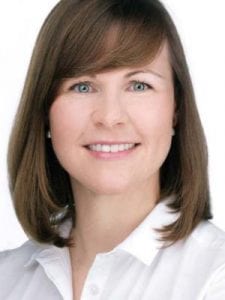
Michaela Gack, PhD
Michaela Gack, a professor of microbiology at the University of Chicago and last year’s recipient of the prestigious Vilcek Prize, is an expert at unraveling the complex interactions between virus and host. By helping us better understand how viruses evade the immune response, Gack’s research may lay the groundwork for new vaccines and antiviral treatments that help us outpace our viral nemeses.
The first and most important step in defeating microbial invaders: detection. When viruses invade a cell, they often trip cellular alarms that distinguish “self” from “non-self.” The human immune system has two main parts, innate and adaptive. Evolutionarily older, the innate immune system provides a broad defense against bacteria and viruses. Vigilantly scanning for tell-tale features of pathogenic intruders, innate immunity is indispensable for our well-being. Once triggered, this defense system springs into action within hours to eliminate the threat and keep us safe.
One star player in the innate immune response and a recurring protagonist in Gack’s research is RIG-I. Despite its lackluster name, RIG-I proteins are present in nearly every cell of the body, functioning as viral sensors. After latching onto specific viral molecules (specifically, a unique portion of viral RNA), RIG-I undergoes a dramatic transformation: it changes shape, and another cellular protein paints it with specific chemical tags. Thus adorned, RIG-I flashes the alarm for viral invasion. (Indeed, this work, which significantly advanced our understanding of the activation process, earned Gack her PhD degree).
Of course, like any talented thief, successful pathogens have ways to circumvent the cell’s intruder warning system. Dengue virus, which the Gack lab studies along with several other viruses, is particularly adept at evading detection and represents a serious global health threat. Belonging to the same virus family as Zika and the West Nile virus, dengue is spread by mosquitoes. Alarmingly, nearly 400 million cases of dengue infection are reported each year, with about two-thirds of the world’s population at risk. While many people infected with dengue show relatively mild symptoms or none at all, for others, the virus can be life threatening—in fact, its alternative name is “breakbone fever.” Given the urgent need for better vaccines and antiviral treatments, it is critical that we better understand how dengue virus outmaneuvers the immune system.
A 2016 report by Gack and former graduate student, Ying Kai Chan, solves part of this mystery. They discovered that both dengue and West Nile make a protein that prevents RIG-I from raising the alarm.
How? One straightforward possibility—that the viral proteins directly target and destroy RIG-I—didn’t seem to happen. Instead, Chan and Gack found that the virus acts to block an intermediary messenger, the cellular protein that shuttles RIG-I to deliver its warning—operating somewhat like a classic movie villain who cuts the phone cord before the police can be called. By stopping the partner protein from interacting with RIG-I, the virus can remain hidden from the immune system.
Gack’s team took this a step further, testing what would happen if they altered the viral region that alerts the messenger and prevents the “emergency call” from connecting. They showed that the mutant dengue virus could no longer stifle RIG-I but prompted a strong immune response.
Gack’s work, with its valuable insights for future vaccine development, has broader resonance. Dengue virus is far from alone in targeting RIG-I: her additional research revealed that the measles virus and human papillomavirus also have ways to subvert this pathway. Other labs have unmasked even more strategies that Ebola and influenza viruses use to disable RIG-I as well.
Millions of years of evolutionary conflict between virus and host have given rise to an astonishingly complex immune system and elaborate viral evasion tactics. By better understanding both how cells sense pathogens and how viruses elude recognition, we can develop not only more effective antiviral treatments but also new strategies to boost the immune response. As the Red Queen reminds us, “If you want to get somewhere else, you must run at least twice as fast as that!”
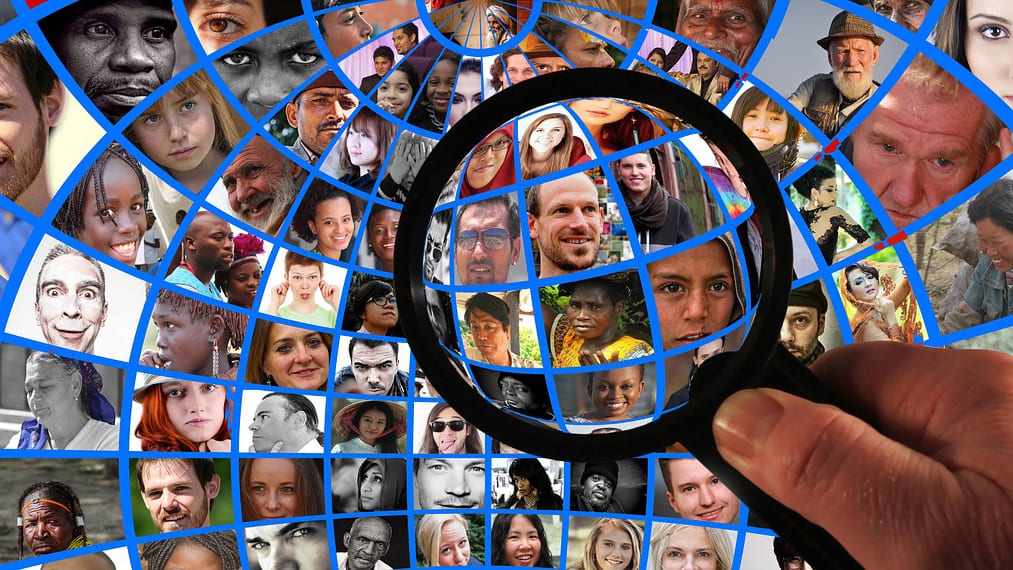
Sep 12, 2018 | Evolution, Immunology
by Matthew Eckwahl, PhD
Postdoctoral fellow in the Department of Biochemistry & Molecular Biology
Take a look at the people around you: besides identical twins, you’ll likely see an array of differences, from height to hair color. Humans vary extensively, not only in appearance but also in less tangible traits. Not surprisingly, these differences often have at least some genetic basis. The immune system is no exception. Individuals differ considerably in their ability to fight off infections and their risk of autoimmune diseases, like type 1 diabetes and inflammatory bowel disease. What’s more, the human immune response has been shaped over time by evolution.
Luis Barreiro, an associate professor at the University of Chicago, seeks to understand how natural selection influences the evolution of our species; in particular, he’s interested in how past evolutionary events affect the immune response. By identifying the genetic factors contributing to infectious disease susceptibility, Barreiro aims to uncover new genes and pathways linked to disease, opening the door to fresh research approaches and novel therapeutic targets.
In an influential 2016 report, Barreiro, then at the University of Montreal, helped shed light on differing disease rates between Americans of African and European descent. His team’s findings are particularly important given some troubling health disparities in autoimmune disorders such as multiple sclerosis and lupus. Young women of African ancestry, for example, are three times more likely than women of European descent to be affected by lupus, a chronic disease in which the body’s immune system attacks its own healthy tissues.
While factors such as environment and socioeconomic status undoubtedly play a role in these health discrepancies, Barreiro’s group showed that the immune response itself differs unexpectedly between people of African and European ancestry. How did they do this?
They first collected blood samples from both groups and isolated their macrophages, immune cells that “eat” bacteria and other parasites. Next, they infected these immune cells with bacterial pathogens—either Salmonella or Listeria, both common culprits of food poisoning—and used leading-edge genomic sequencing techniques to see how infection altered gene activity. Remarkably, they discovered that about one-third of genes active in macrophages showed different activity in people of European versus African descent.
It turns out that many of these genes are involved in activating the immune system: people of African ancestry showed much higher expression of genes associated with inflammation compared to those of European origin. While some of these are linked to known immune diseases like celiac and Crohn’s disease, they also provided at least one advantage: macrophages from African Americans were far better at devouring bacterial invaders and eliminating infection.
Incredibly, interbreeding with another human species—Neanderthals—also plays a role in this story. Although Neanderthals went extinct around 40,000 years ago, they left an indelible mark on the human genome, contributing to about 2 percent or less of human ancestry. Barreiro’s team identified immune variants that were preferentially passed on from Neanderthals to people of European—but not African—ancestry. Notably, these DNA variants are associated with reduced inflammation. (In a complementary report, the Barreiro lab explored a specific immunity gene that protects against viral infection and also appears to have been obtained from Neanderthal interbreeding.)
One mystery remains: what evolutionary pressures gave rise to these divergent immune responses? One possibility is that humans who migrated out of Africa experienced fewer exposures to potentially dangerous microbes, making a robust inflammatory response less valuable or even harmful. In contrast, Africa’s tropical environment may have favored a stronger immune response to combat more frequent pathogen exposure.
Regardless of the ultimate cause, each population seems to have ended at a different “balance point.” The immune system operates somewhat like a smoke alarm, keeping us safe from possible disaster. And like a smoke alarm, the system should respond proportionally to the threat at hand: not sensitive enough, and you risk being unaware as fire engulfs your house. But too sensitive, and the alarm shrieks at the first hint of burnt toast. There’s always a tradeoff. While an overactive immune system is better at fending off parasites, it may also lead to higher risk of autoinflammatory and autoimmune diseases.
Carl Sagan, a famous astronomer and science popularizer, once said, “You have to know the past to understand the present.” By highlighting how long-ago evolutionary events affect our genome, Barreiro’s findings expose a key influence that human ancestry has on immunity. Further, his research underscores the necessity of expanding racial diversity in clinical trials, where commonly more than 80 percent of participants are white. Together, by helping us better understand the evolutionary forces shaping our species, the work of Barreiro and others may contribute to the eventual dream of precision medicine.

Aug 29, 2018 | Cancer, Commercialization, Microbiome, News Roundup
A selection of health news from the University of Chicago and around the globe curated just for you.
UChicago awarded $1 million grant to study microbiome dynamics
Researchers from UChicago have received a $1 million grant from the W.M. Keck Foundation to study how the molecular activity of the microbiome changes in response to the environment. Eugene Chang and Tao Pan featured. (The Forefront)
Reliable point-of-care blood test can help prevent toxoplasmosis
A recent study, performed in Chicago and Morocco found that a novel finger-prick test can accurately predict infection with the parasite Toxoplasma gondii during pregnancy. Rima McLeod, whose broader work is reported in an earlier WellNews post, featured. (The Forefront)
‘Zombie gene’ protects against cancer—in elephants
With such enormous bodies, elephants should be particularly prone to tumors. But an ancient gene in their DNA, somehow resurrected, seems to shield the animals. Vincent Lynch featured. (New York Times)
Hospital bacteria are starting to tolerate hand sanitizer
Strains of bacteria have developed increased tolerance to the alcohols in hand sanitizers, which requires hospitals to rethink how they protect patients from drug-resistant bacteria. (Futurity)
Oxalo Therapeutics among recipients of scholarships from drug accelerator
Cydan II Inc., an orphan drug accelerator dedicated to creating therapies that impact the lives of people living with rare genetic diseases, announced it has selected four start-up organizations and companies, including Oxalo, to receive $5,000 scholarships to support innovations that impact the lives of people with rare conditions. (BusinessWire)
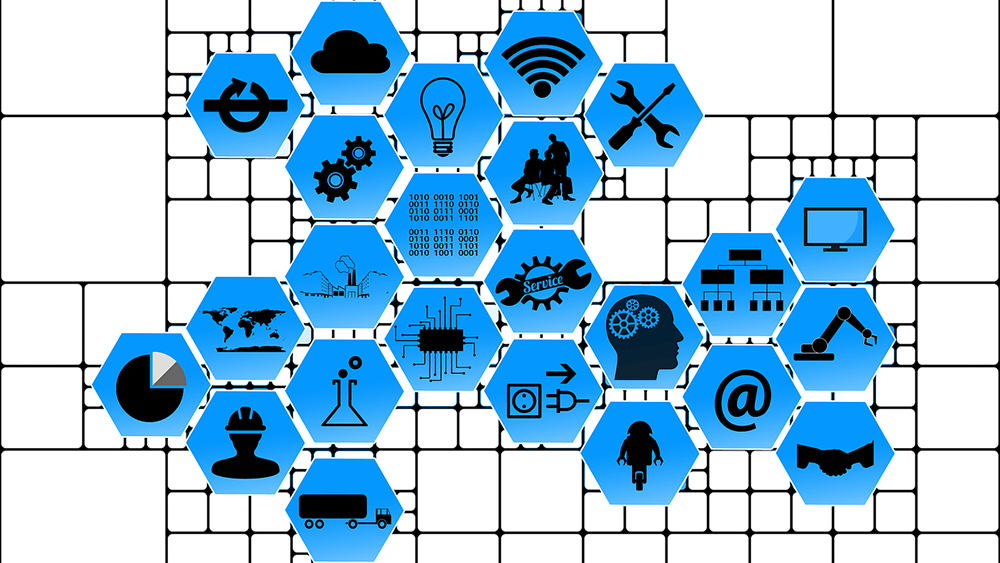
Aug 15, 2018 | Commercialization, Immunology
by Claire Stevenson
Graduate student in the Committee on Development, Regeneration and Stem Cell Biology
Two University of Chicago-based startups, Oxalo Therapeutics and ImmunArtes, recently beat out fierce competition to be chosen for MassChallenge Boston, a global start-up accelerator with a focus on high-impact entrepreneurs. With 1600 teams vying for a spot and an 8 percent acceptance rate, this was the most competitive year yet, so getting into the program says a lot about the excitement around these two companies.
MassChallenge is a not-for-profit accelerator that offers world-class programming. The vision of its founders is toward a “creative, inspired society in which everyone is empowered and has the resources to maximize their impact.” Through its flagship location in Boston, and many others worldwide, MassChallenge runs programs and draws teams from around the world.
A sought-after feature of MassChallenge is the opportunity to make connections with top corporate partners and build a network of expert mentors. The program culminates with teams competing for up to $1.5 million in cash prizes to help grow their businesses, but according to Yang Zheng, co-founder and COO of Oxalo Therapeutics, “the real prize is getting in the Challenge and all the connections you make.”
Oxalo and ImmunArtes both formed less than a year ago and have hit the ground running with investment from the University of Chicago Polsky Center for Entrepreneurship and Innovation. Though Polsky’s Innovation Fund, Oxalo and ImmunArtes won $250,000 and $175,000, respectively, in new venture funding. Oxalo was also awarded $25,000 through the Polsky Center’s New Venture Challenge, the top university accelerator program in the nation. “Chicago is great for STEM and entrepreneurship,” noted Zheng. “The resources here helped us get to this stage.”
Oxalo Therapeutics is developing a first-in-class therapeutic to treat kidney stones, a painful condition that damages the kidneys and increases risk of chronic disease. Oxalo’s preventative drug, derived from a natural gut bacterium, will offer significant advantages over current treatment methods. The Oxalo team’s scientific lead is Hatim Hassan, MD, PhD, a UChicago nephrologist; Zheng, an MBA candidate at the UChicago Booth School of Business, leads the business side.
At MassChallenge Boston, Zheng is particularly excited about the relationships Oxalo is forming with new mentors. They are getting strategic advice about the condition they aim to treat and the drug development route they are pursuing. “The mentors are the biggest help so far,” he said.
ImmunArtes, Chicago’s other competitor, has developed a novel vaccine against staph infections, including the antibiotic resistant strain known as MRSA. Staph infections are a major issue in health care, yet no vaccine currently exists. The team at ImmunArtes, led by Olaf Schneewind, MD, PhD and Dominique Missiakas, PhD, both professors of microbiology at UChicago, has engineered a staph protein that will enable them to overcome hurdles faced by previous attempts at vaccine development.
ImmunArtes is benefiting from the excellent mentorship opportunities at MassChallenge Boston and a nice sense of community that the program provides. “It’s helpful to interact with the other teams and fun to see when you can help them,” notes Chloe Schneewind, manager of ImmunArtes’s communications at MassChallenge.
The team is learning a lot from their time in Boston, but they want to maintain their connection to the Midwest. “Chicago is important to the identity of the company,” Chloe emphasized. “Boston has an entrepreneurial culture and we want to bring this back to Chicago. The Midwest doesn’t yet have the biotech startup culture it deserves.”
But Chicago’s entrepreneurial reputation is growing. “There was a push to get Chicago companies involved in MassChallenge,” Zheng pointed out. “They recognize that there is good technology here, the strong research institutes are drivers [of that].”
A prime example of this is the Duchossois Family Institute, which is making paradigm-shifting investments to push discovery forward and build toward a future in which Chicago is on the map as a center for innovative biotechnology.
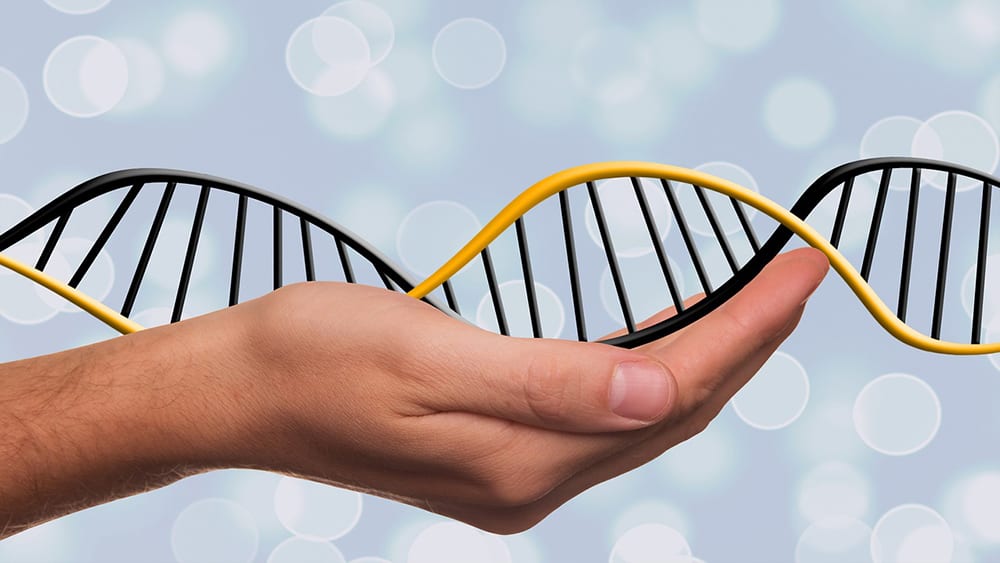
Aug 9, 2018 | Nanotechnology, Research
by Matthew Eckwahl, PhD
Postdoctoral fellow in the Department of Biochemistry & Molecular Biology
Over a decade ago, artist-scientists first used “DNA origami” to create minuscule smiley faces sculptures. It turns out that DNA’s structural diversity is perfect for building more useful tiny machinery. University of Chicago scientists have taken a lead in developing DNA nanomachines with tremendous potential to help us better understand how cells work, diagnose diseases, and test new treatments.
Yamuna Krishnan is at the leading edge of developing DNA-based tools to home in on specific structures inside the living cell and decipher what is going on there. One powerful use of this technology: identify unhealthy states before disease ravages the body.
Krishnan, the only woman to have won the Infosys Prize in the physical sciences, once aspired to become an architect, so it’s fitting she now builds tools for finding genetic maladies. Her work focuses on the lysosome, the cell’s recycling center, which breaks down useless or toxic material to make new components. Like a city with a failed garbage collection system, if a cell’s lysosomes don’t function properly, there are major problems caused by a buildup of undigested cellular waste. Not surprisingly, genetic lysosome defects can result in a variety of human diseases.
Nearly 60 lysosomal storage disorders have been identified so far. Although individually rare, these diseases collectively occur in about one in 5,000 births and can be inherited from one or both parents. Symptoms vary widely depending on the type of cellular waste that accumulates and where in the body this occurs. Ultimately, the undigested material causes the affected organ to function less efficiently, leading to physical and mental impairments such as seizures, dementia, cardiac disorders, vision and hearing loss, and bone abnormalities. Lysosomal disorders usually arise in childhood, often without obvious symptoms, and many babies die suddenly within months or years of birth.
Although there is no cure for these disorders, an increasing number of treatments are available to reduce symptoms and prolong life—if diagnosis is made early. Faster, more accurate methods to detect lysosomal defects are thus essential.
Krishnan and colleagues have developed DNA nanodevices to uncover these metabolic disorders before it’s too late. To get these DNA nanobots to work, her team overcame several major challenges. First, they needed the devices to specifically target the lysosome. Within the cell, a bustling community with many different activity centers, the nanobot must have the exact molecular address to get to the lysosomal recycling center.
Next, the bot must distinguish healthy from defective lysosomes. Since the lysosome is the most acidic “organelle” within a cell, pH was chosen as a key indicator of lysosome health—just like high blood sugar levels can indicate diabetes. If a lysosome’s pH is off, it suggests something is probably wrong. Impressively, Krishnan’s nanobots can not only find the lysosomes, but also measure their acidity—changing color at different pH levels—without disturbing the other functions in living cells.
Krishnan’s newly created company, Esya, aims to deploy these DNA nanodevices to diagnose a wide range of lysosomal disorders, all from a simple blood draw. This should considerably speed up the testing process and provide a much better outcome for those at risk for disease. This tool could also be adapted to rapidly screen new drugs that normalize the lysosome’s acidity, making it easier and faster to discover improved treatment options.
Krishnan’s lab has developed nanobots that recognize other chemical changes in diseased lysosomes as well. In research reported last year, the Krishnan group created a DNA nanodevice to measure chloride ions—what we know as part of table salt—the first tool capable of sensing this important electrolyte inside a living cell. Their research showed that normal lysosomes have much higher chloride ion levels than defective ones, revealing the unexpectedly important role chloride plays in lysosomal biology— a valuable tool for unmasking lysosomal diseases that don’t affect pH.
Earlier this year, the Krishnan team reported another nifty nanobot that directly senses congestion from undigested material building up in the lysosomes. By reporting back on the gridlocked environment that is a hallmark of lysosomal disorders, this newest device may provide early warnings for other kinds of disorders, preventing future disaster.
It’s reassuring to know that if something is going wrong with your car, a flashing light will warn you before it’s too late. Likewise, the work of Krishnan and others highlights how DNA, life’s genetic material, can also help uncover potentially fatal human diseases and save lives.

Jul 31, 2018 | Food Allergies, Microbiome, News Roundup, Research
A selection of health news from the University of Chicago and around the globe curated just for you.
Anglerfish and their headlamp bacteria have a crazy relationship
Researchers have sequenced and analyzed the genomes of the glowing bacteria living in the bulbs that hang off the heads of anglerfish. (Futurity)
Can a cat-poo parasite turn you into a millionaire
Scientists have discovered that people infected with toxoplasmosis are more go-getting. But that doesn’t mean we should all be trying to catch it. (The Guardian)
What the mystery of the tick-borne meat allergy could reveal
Unraveling why tick bites are suddenly causing a strange reaction in some people who eat meat could help scientists better understand how all allergies work. (The New York Times Magazine)
Could viruses attacking the microbiome be responsible for inflammatory bowel disease?
New research done in a mouse model of inflammatory bowel disease (IBD) has suggested that viruses called phages, which have the ability to infect and kill gut bacteria, may be involved in the disease. David Rubin featured. (Forbes)
Celiac disease: A look at what triggers it, possible prevention
Bana Jabri and colleagues at UChicago have found that a common, but mostly harmless, virus could trigger celiac disease. (KPRC 2 Houston)
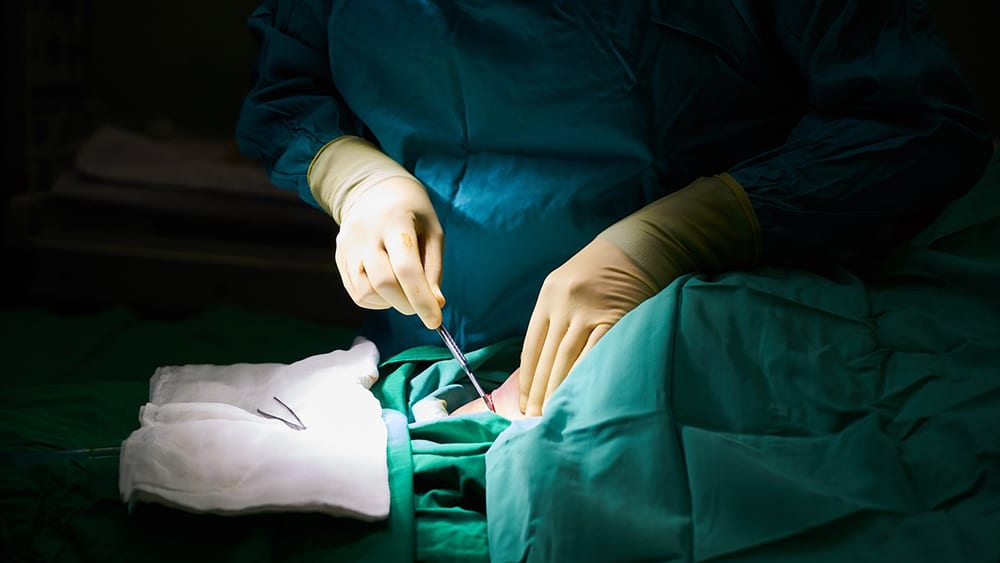
Jul 26, 2018 | Microbiome, Research, Surgery
by Claire Stevenson
Graduate student in the Committee on Development, Regeneration and Stem Cell Biology
John Alverdy, MD, is a gastrointestinal surgeon and researcher studying the mechanisms by which patients develop infections after surgery and figuring out how best to treat—and prevent—them.
“Research suggests that applying microbiome medicine … to surgical patients will change everything.” Alverdy offered that assessment recently on receiving the Flance-Karl Award for seminal contributions to the field of surgical science. The award was presented at the 103rd Clinical Congress of the American Surgical Association, the most prestigious society in the world aimed at keeping physicians up to date in the field.
Surgical site infections can be debilitating and life-threatening, increasing the risk of death after surgery up to 11-fold, even with advances in medical techniques. Alverdy has committed a large portion of his career to understanding how these infections develop following routine surgery.
He questions the assumption that all infections are caused by bacteria that enter the body during the surgical procedure. “Killing as many threatening microbes as possible prior to surgery, although a common practice, remains questionable from a scientific standpoint,” Alverdy says. His research suggests that the patient’s own microbiome, especially the microorganisms that live in each of our guts, could play a key role in these infections. Perhaps simply keeping our own resident bugs healthy and happy may actually make more sense than broadly eliminating all bacteria.
Microbes can exist in two states, a stable low-growth state and a virulent one, and they transition between these states based on cues from their environment. Alverdy reasoned that our bodies could harbor microbes that are normally innocuous, but which can switch to the harmful state when threatened, as when they have inadequate resources to support growth and reproduction.
In intestinal operations, wounds are normally colonized by gut bacteria. Alverdy and his team demonstrated that alarm signals from the patient’s own tissues and diminishing resources can shift normal bacteria to a more harmful state, significantly impairing healing. Sometimes, these normally helpful bacteria can express enzymes and toxins that cause a leak in the gut repair or other major complications.
Alverdy and his team reasoned it might be more effective to provide local resources to resident bacteria, shielding them from the patient’s alarm signals, in lieu of the traditional broad kill approach with antibiotics. By supporting the health of our normal bacteria, it might be possible to preserve them and thus keep the potentially harmful ones at bay. Alverdy’s lab is thus working to identify the “local public goods” the “good” microbes are missing in their environment and provide these directly to tissues at risk for infection.
Every individual’s microbiome is different, influenced by factors that include diet, travel, medications, and home environment. This could explain why, among patients who have been treated with the same high level of care, some develop infections while others do not. According to Alverdy, “It is time we recognize that any given individual’s disease is biologically unique,” and that, “a one-size-fits all approach to preventing infectious-related complications in surgery … will always be insufficient.”
Work like Alverdy’s, on the microbiome’s role in surgical infections, has the potential to revolutionize patient care. According to him, this could change, “the way we diagnose our patients, our approach to preparing them for surgery, the way we operate, and the way we feed and rehabilitate them postoperatively.” This could even lead to individualized medicine, where each patient’s microbiome is tested prior to surgery and their care is adjusted appropriately. The Duchossois Family Institute’s investment in microbiome research will be a part of turning this vision into a reality.
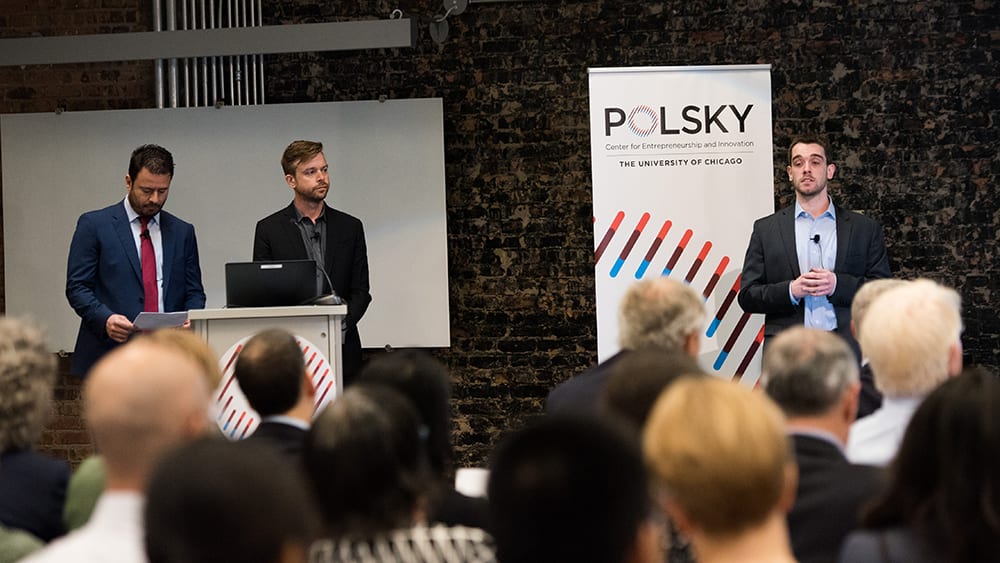
Jul 18, 2018 | Microbiome, Research
by Bethany Hubbard
What we leave behind tells a story, and Jack Gilbert, PhD, is an expert at reconstructing the narrative.
“When you poop, you poop gold in terms of valuable information about what’s going on inside your gut,” said Gilbert, who is a microbial ecologist at the University of Chicago. “And every day, the information in your poop is slightly different. Each day is providing us with a different snapshot of what’s going on inside your body, and having all of that information is immensely valuable.”
Gilbert’s work on the microbiome—the unique collection of microbes that live in each person’s gut—has earned him international recognition and spurred interest in this burgeoning field of research.
Now, through a new start up called BiomeSense, Inc., Gilbert and colleagues are working to commercialize their microbiome research and revolutionize methods for collecting and synthesizing people’s microbial data. The goal: identify and characterize microbes and their behavior in order to uncover better ways to treat disease and maintain health.
“More and more, people are realizing that our microbiome content has a lot to do with our health,” said Savas Tay, PhD, company co-founder and UChicago molecular engineer. “There are all kinds of metabolic diseases, cancers, and psychiatric diseases that are related to the microbiome.”
To better collect this valuable data, Gilbert and Tay developed new technology that analyzes a person’s microbiome through the collection and analysis of, you guessed it, their poop. Tay likens this “biosensor” to a computer chip that channels fluid instead of electricity through its wires. The biosensor can be connected to a toilet, where it extracts DNA from each bacterial cell within a stool sample and regularly sends that data to the cloud.
“So, we are looking to characterize the genetic potential—the functional potential—of the microbiome in your stool every single day in a routine and automated way,” Gilbert said. “We can basically weaponize the microbiome for clinical discovery.”
By generating more data about a person’s microbiome makeup, the pair hope to help physicians tailor more holistic treatment plans that include dietary recommendations in order to maximize the impact of certain drug treatments. For example, a doctor might recommend that a person eat more of a certain fruit because it promotes the growth of a beneficial bacterium that is known to increase the efficacy of a drug they’re taking.
The biosensor can take multiple samples over an extended period of time, which is important because the microbiome is always in flux.
“The composition of your microbes—the 500 to 1,000 different species of bacteria that live inside you—doesn’t really change very much at all,” Gilbert said. “It’s just the relative proportions that do.”
So, a stool sample taken this morning may tell a completely different story from a sample collected tomorrow, or even this afternoon. The biosensors real-time data will allow doctors to revise treatment plans daily.
“You eat something, your microbiome changes. You take a drug, your microbiome changes. You travel, it changes,” Tay said. “So, just measuring it once really doesn’t tell you anything. You need to measure it regularly.”
The BiomeSense team hopes the biosensor will eventually replace current manual methods of collection, which are less than ideal. Not unexpectedly, patients are reluctant to collect their own stool samples and send them into the lab. Plus, the microbiome makeup can be altered during transport, rendering the data unreliable. BiomeSense eliminates these variables.
The team first aims to implement the biosensor in clinical trials before pursuing a consumer product. “In the short term, we’re producing data that can be used to improve how we design drugs and improve the success of drug trials,” Gilbert said.
BiomeSense was recently awarded $250,000 from the University of Chicago’s Innovation Fund and previously received $90,000 in research funding from the Duchossois Family Institute, which will be used to complete a prototype.
“Our next big step is taking it from the bench to actually installing it in a patient home so we can start collecting data,” said company CEO and co-founder Kevin Honaker. “It’s going to take a lot of funding to get there.”
In the future, Gilbert hopes to create a global microbiome database—input a patient’s disease, prescribed drugs, demographics, and environment to determine the exact diet needed to augment their microbiome.
“BiomeSense is the only platform in the world that can generate that kind of information,” Gilbert said. “Nothing else can.”
Bethany Hubbard is associate director for digital communications in the University of Chicago Medicine & Biological Sciences Development office.

Jun 29, 2018 | Big Data, Microbiome, News Roundup, Research
A selection of health news from the University of Chicago and around the globe curated just for you.
Research at Shedd Aquarium explores how environment impacts microbiome of dolphins
Research conducted at the Shedd Aquarium with UChicago revealed new details about the microbiome of Pacific white-sided dolphins at the aquarium and how it is influenced by the surrounding environment. (The Forefront)
Can a daily pill prevent kidney stones?
Hatim Hassan and other researchers at Oxalo Therapeutics are developing a drug that uses the microbiome to prevent kidney stones. (Crain’s Chicago Business)
Viruses love what we’ve done with the planet
The more of the planet humans take over, the more we inadvertently make it a viral paradise, and a dangerous place for us to live. (Quartz)
Probiotic, supplement combo extends fruit fly lifespan
A combination of probiotics and an herbal supplement called Triphala extended the lives of fruit flies by 60 percent, report researchers. (Futurity)
Students and UChicago scientists turn Wrigley Field into data lab
Lane Tech students came to Wrigley Field to help UChicago-Argonne researchers install sensors for Array of Things, a project that collects environmental data. (UChicago News)














